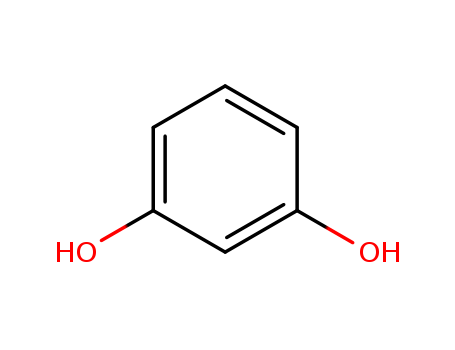10.1016/j.tet.2016.02.006
The study focuses on the practical regioselective halogenation of vinylogous esters, leading to the synthesis of differentiated mono-haloresorcinols and polyhalogenated resorcinols. This chemical process is significant for the creation of functionalized building blocks that are valuable in the synthesis of natural products, pharmaceuticals, agrochemicals, and functional materials. The researchers utilized a variety of chemicals in their experiments, including vinylogous esters as starting materials, aryl halides as coupling partners, and sulfonyl halides as effective halogenating agents. They also employed bases such as LiHMDS and additives like HMPA to facilitate the deprotonation and halogenation steps. The purpose of these chemicals was to achieve selective halogenation at specific sites on the aromatic ring, which is a critical aspect in the synthesis of complex organic molecules. The study's innovative approach provides a more efficient and direct method for synthesizing halogenated aromatic compounds, which are essential in various industrial and pharmaceutical applications.
10.1021/ja0465092
The research focuses on the synthesis of heteroatom-bridged calix[2]arene[2]triazines, which are part of the next generation of calixarenes or cyclophanes. The researchers used a fragment coupling approach, starting from cyanuric chloride and various phenolic or amine-based compounds such as resorcinol, 3-aminophenol, m-phenylenediamine, and N,N′-dimethyl-m-phenylenediamine. They found that the nature of the bridging heteroatoms, specifically the combination of electronic, conjugative, and steric effects of nitrogen and oxygen atoms, strongly influenced the cavity size, resulting in a range of fine-tuned cavities. The distances between two benzene rings at the upper rim of the synthesized calixarenes varied from 5.011 to 7.979 ?. The study concluded that the developed method is not only efficient and convenient but also versatile for constructing more sophisticated and functionalized molecular architectures. The synthesized aza- and/or oxo-bridged calix[2]arene[2]triazines exhibit unique electronic features and tunable cavity structures, making them promising macrocyclic host molecules for molecular recognition studies.
10.1039/c4cc08562k
The study presents a protecting group-free enantiospecific total synthesis of structurally diverse natural products belonging to the tetrahydrocannabinoid family. The researchers developed a simple, highly diastereoselective method using Lewis acid catalyzed Friedel-Crafts coupling of cyclic allylic alcohol with resorcinol derivatives. Key chemicals used in the study include R-(+) and S-(-) limonene as starting materials, allylic alcohol 14 and electron-rich aromatic moiety 15 for coupling, and BF3·OEt2 as the best catalyst for the cyclization reaction. The purpose of these chemicals was to achieve the synthesis of natural products like machaeriol-D, Δ8-THC, Δ9-THC, epi-perrottetinene, and their analogues with high atom economy, without the need for protecting groups, and in a short sequence of less than six steps, starting from readily available and inexpensive materials.
10.1016/j.cclet.2011.03.006
The research investigates the influence of a bromoalkyloxy side chain on the mesomorphic behavior of a new homologous series of isoflavone-based ethers, specifically 7-(4-bromoalkyloxy)-3-(4'-decyloxyphenyl)-4H-1-benzopyran-4-ones. The purpose is to understand how structural modifications, particularly the presence of a bromine atom in the alkyloxy side chain, affect the liquid crystalline properties of these compounds. Resorcinol (1,3-dihydroxybenzene) is used as a core reactant in the synthesis of the isoflavone-based ethers. 1-Bromodecane is used as a reactant to introduce the decyloxy (C10H21O) side chain into the molecular structure of the target compounds. Differential scanning calorimetry (DSC) and polarizing optical microscopy (POM) were employed to study the mesomorphic properties. The results showed that all homologues exhibited a stable enantiotropic smectic A (SmA) phase, independent of the side chain length. The bromine atom in the alkyloxy chain was found to facilitate lamellar packing due to its polarizability and polarity, leading to the formation of the SmA phase. However, it also prevented the formation of the smectic C (SmC) phase due to steric effects when molecules are tilted. The study concluded that the stability of the mesophase is due to the polar bromine atom, the planarity and enhanced polarity of the ether linkages, and the heterocyclic central moiety. This research provides insights into the structure–property relationships in liquid crystalline compounds, which can be useful for designing materials with specific mesomorphic behaviors.
10.1016/j.bmc.2010.06.077
The research discusses the synthesis and inhibitory activity of resorcinol and phloroglucinol derivatives of catechin and epicatechin against ribonuclease A (RNase A), with the aim of increasing the number of phenolic hydroxyl groups to enhance inhibition. The study concluded that these novel conjugates were more effective inhibitors of RNase A than catechin and epicatechin, highlighting the importance of phenolic hydroxyl groups in inhibiting ribonucleolytic activity. The research also explored the compounds' anti-angiogenic activity through the chorioallantoic membrane (CAM) assay, finding that the epicatechin-based polyphenols showed inhibition of angiogenin-induced angiogenesis. Chemicals used in the synthesis process included (+)-catechin, (-)-epicatechin, phloroglucinol, resorcinol, LiBr, and various protecting groups such as benzyl ether. The study employed techniques like fluorescence studies, protein-ligand docking, and CD spectroscopic studies to evaluate binding parameters and interactions.



 Xn,
Xn, N
N


